Virology
Helical Symmetry
Coat protein molecules engage in identical, equivalent interactions with one another and with the viral genome to allow construction of a large, stable structure from a single protein subunit.
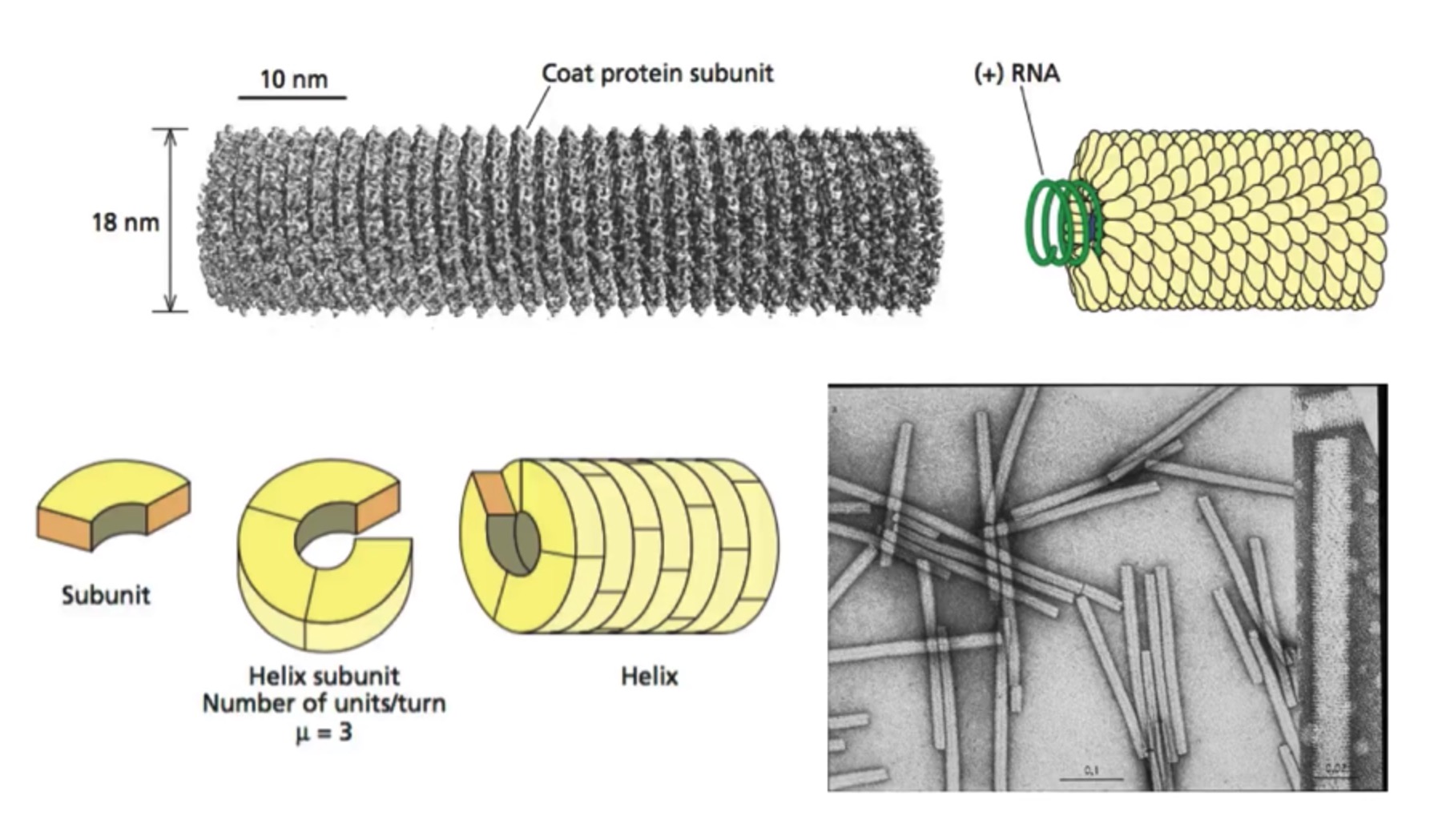
Tags:
Source:
Virology
+ vs - Strand RNA Viruses
The positive strand RNA viruses are ready to be translated when they enter the cell. The negative strand RNA viruses have to first be copied by the RNA polymerase that's in the virus particle.
Tags:
Source:
Virology
Helical Viruses Envelope
Turns out that all known animal helical structure viruses have a nucleocapsid with an envelope around it. Plant helical viruses don't have the envelope. They are made of capsids enclosing the RNA.
Tags:
Source:
Virology
Round Capsids
All round capsids have precise number of proteins; multiples of 60 are common (60, 180, 240, 960).
Tags:
Source:
Virology
Caspar & Klug
Caspar and Klug discovered in 1962 that round capsids are icosahedrons. Capsid subunits tended to be arranged as hexamers or pentamers.
Tags:
Source:
Virology
Icosahedral symmetry
Icosahedron is a platonic solid with 20 faces, each an equilateral triangle. It has 5x, 3x, and 2x axes of symmetry (12 each). Allows a formation of a small shell with smallest number (60) of identical subunits.
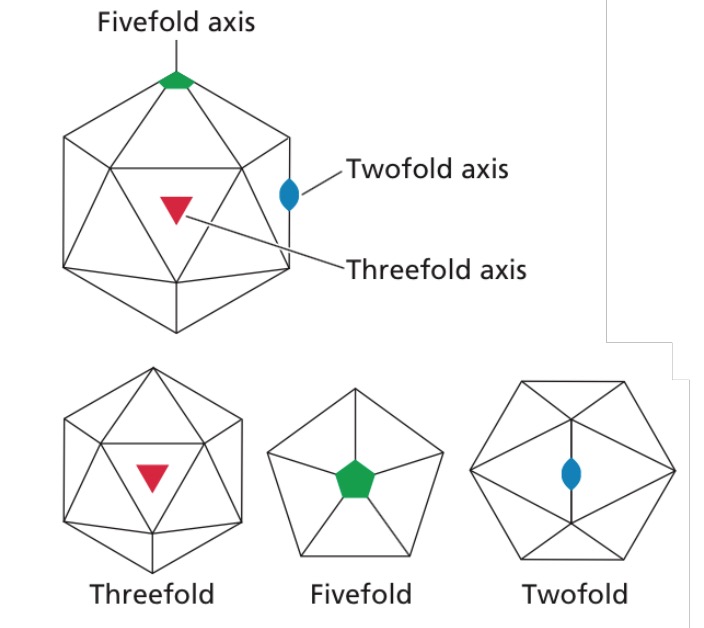
Tags:
Source:
Virology
Simple Icosahedral Capsid
Made of 60 identical subunits represented as commas in the image. Each subnit is an identical type of protein. Interactions of all molecules with their neighbors is identical (head to head, tail to tail). The particles are spherical, not icosahedral.
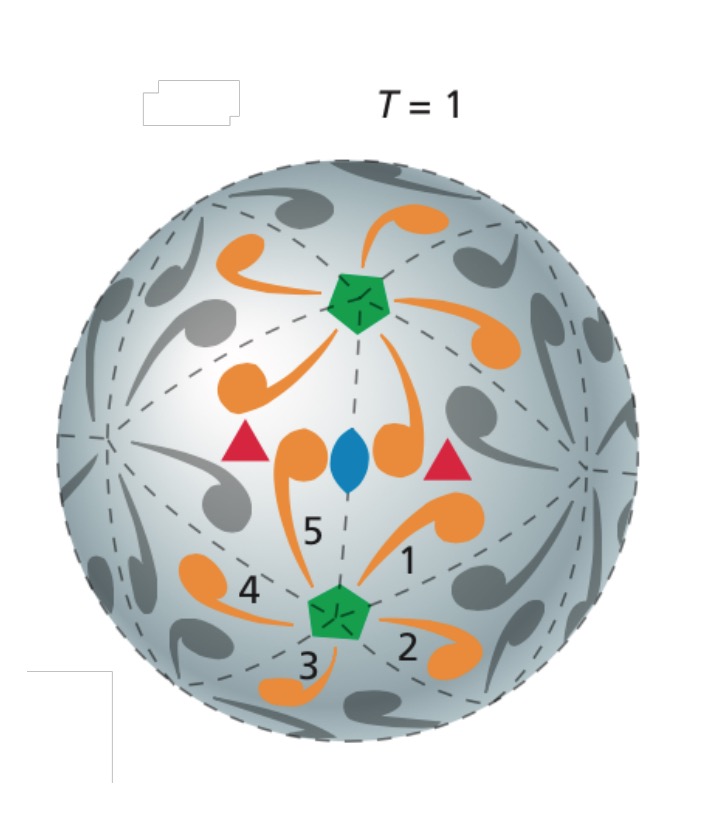
Tags:
Source:
Virology
Larger Icosahedral Capsid
Uses 3 different proteins. Made of pentamers and hexamers (unlike simple icosahedral capsids, which are made of pentamers only). Three modes of subunit packing (orange, yellow, purple). Quasiequivalent bonding interactions: all engage in head to head and tail to tail interactions. 180 identical protein subunits in the example below.
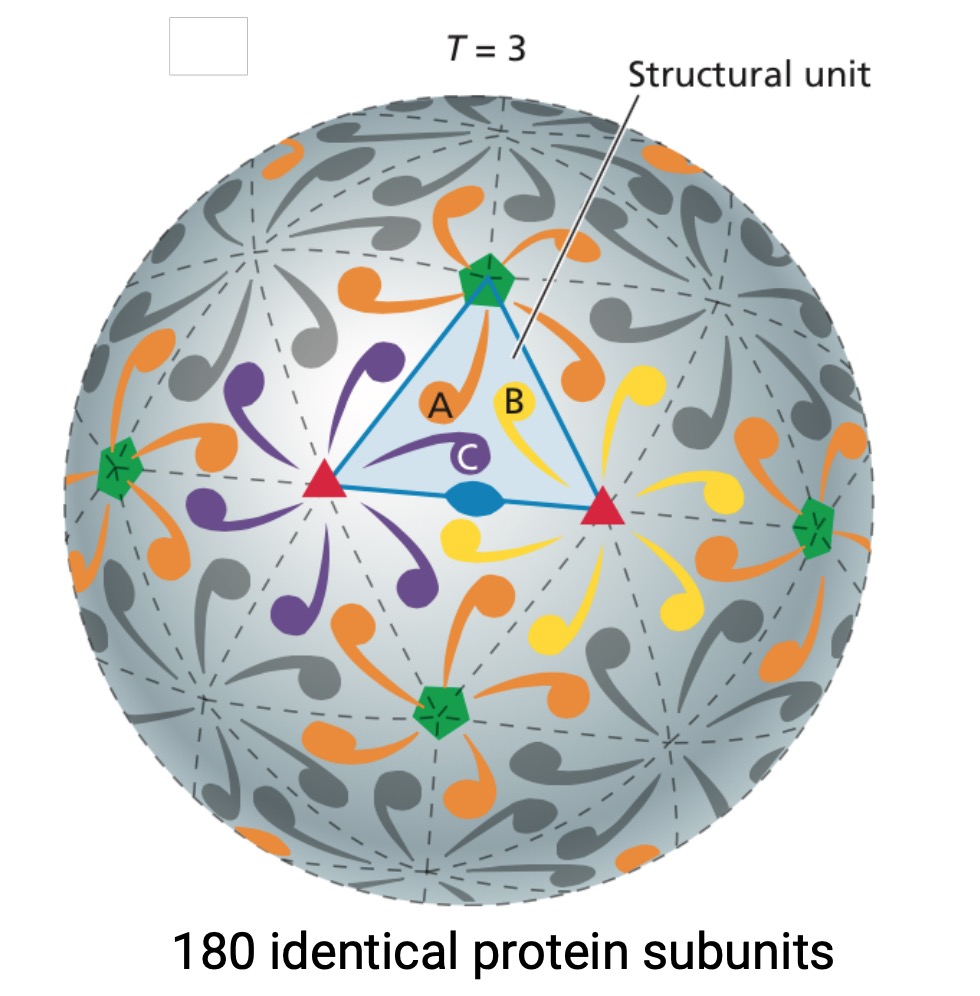
Tags:
Source:
Virology
T Number
The number of smallest triangular structures making up the triangular face of an icosahedron.
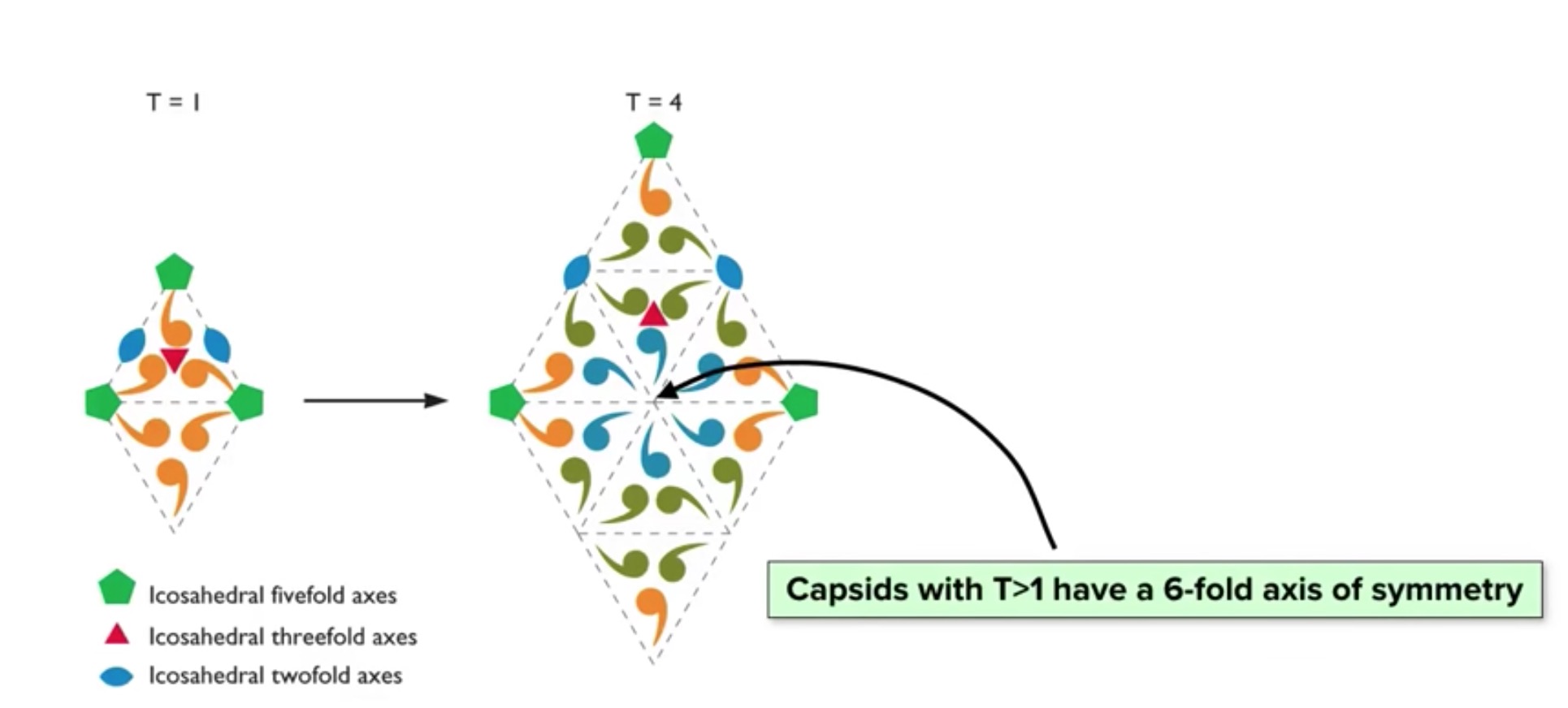
Tags:
Source:
Virology
T Number Examples
The following are T number structure example:

Tags:
Source:
Virology
Large Complex Capsids
Below is an example of a large complex capsid with T=25.
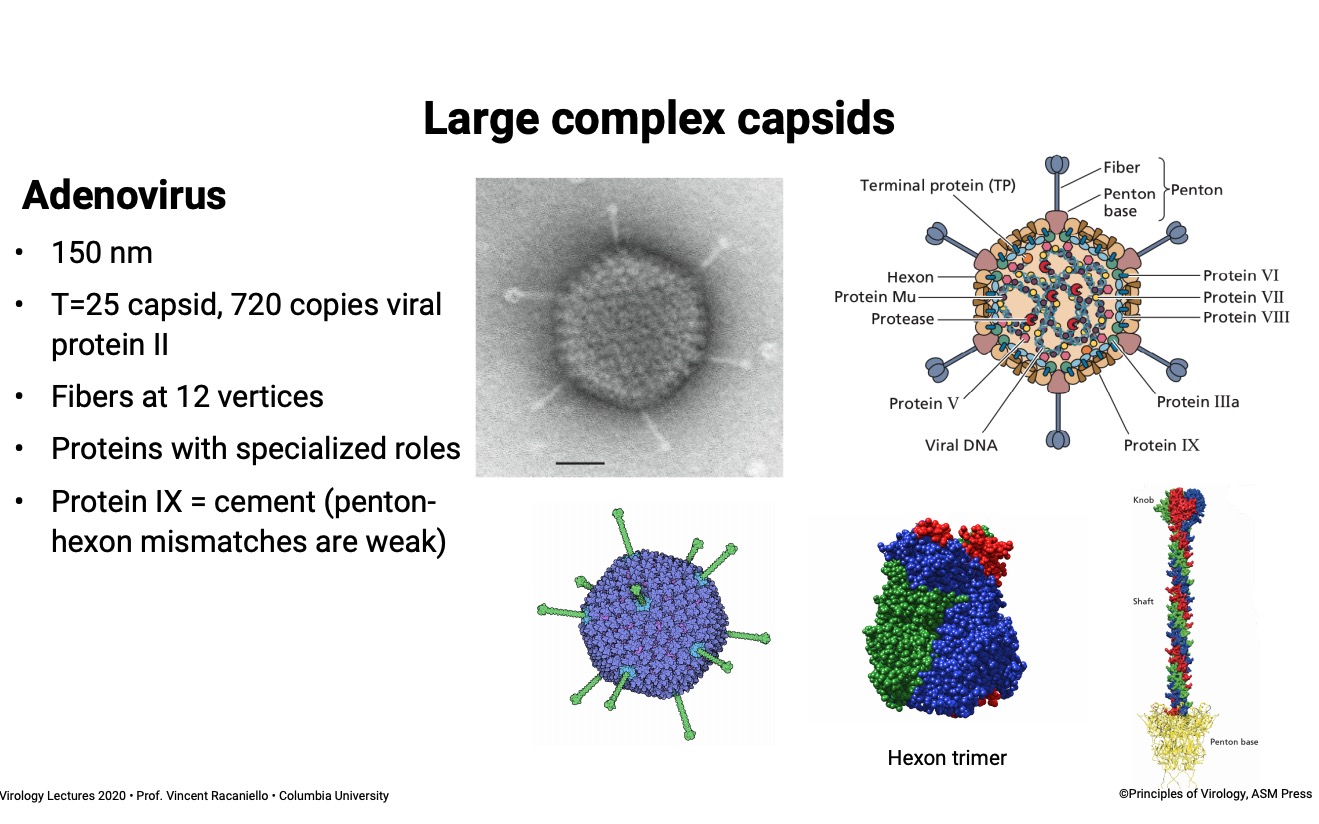
Tags:
Source:
Virology
Rioviruses
Rioviruses have two shells - inner and outer.
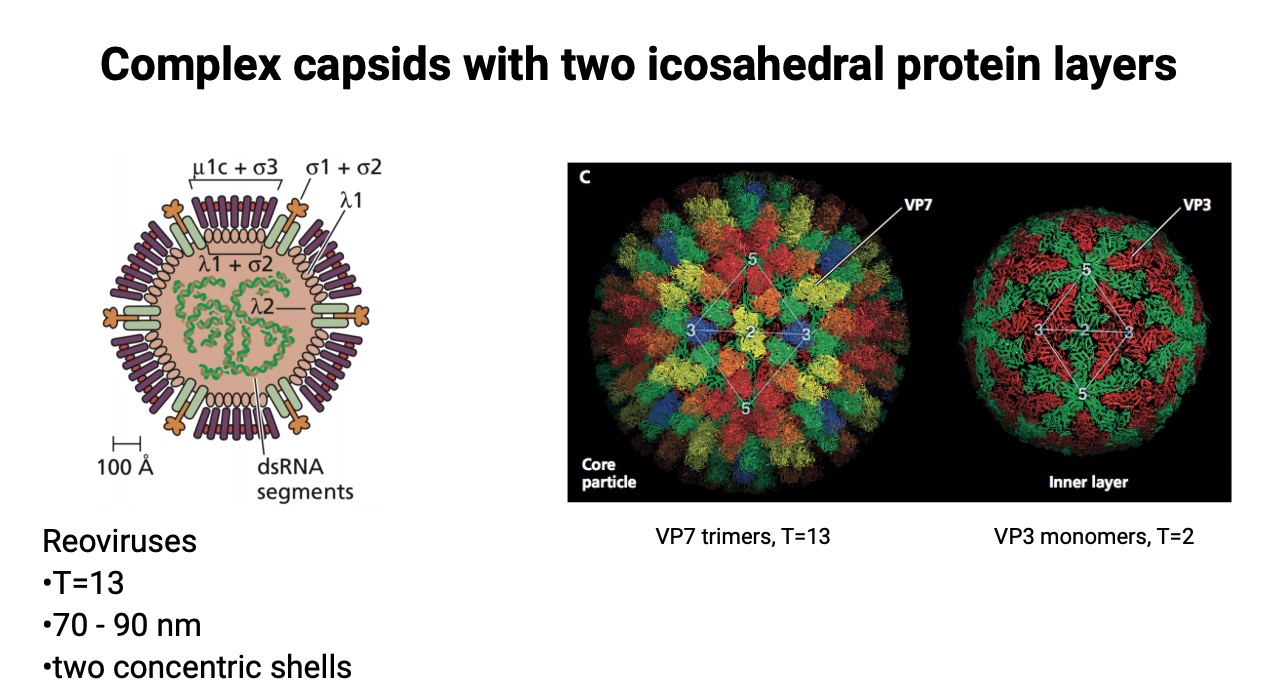
Tags:
Source:
Virology
Tailed Bacteriophages
Tailed bacteriophages use a combination of a capsid attached to a helical tail attached to a baseplate. The genetic material is in the capsid stored under a high pressure. Upon attachment to the cell, the baseplate penetrates the cell membrane and the genome is injected into the cell.
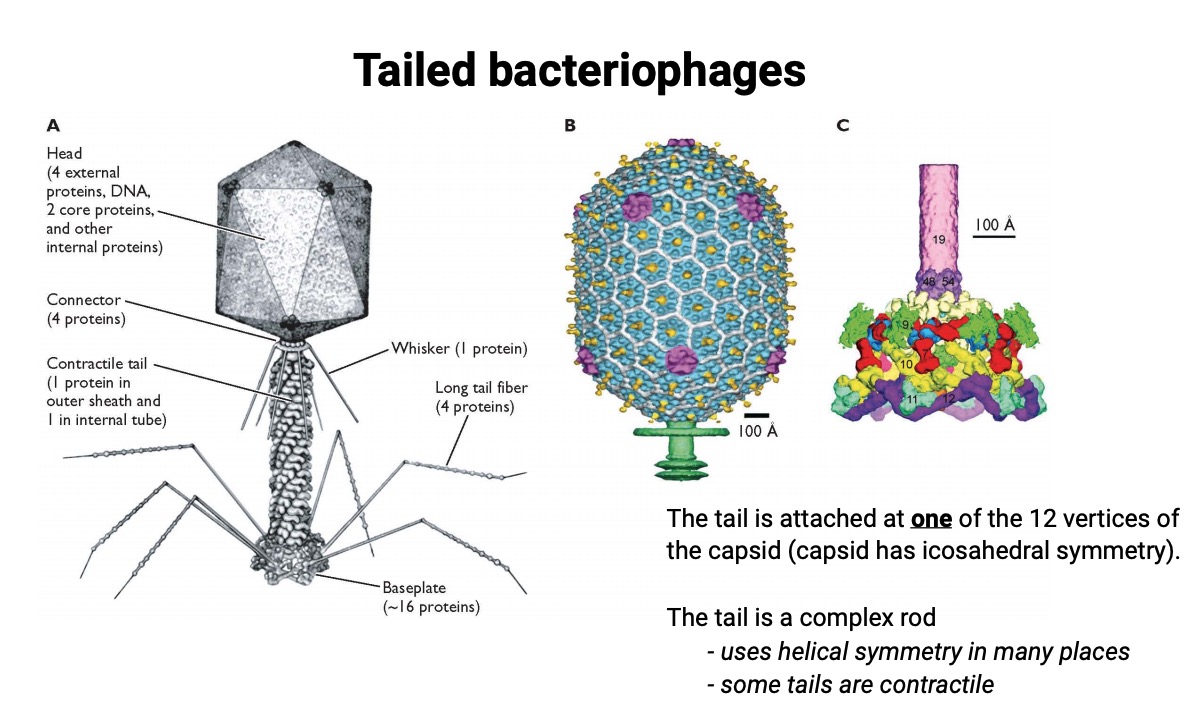
Tags:
Source:
Virology
Bacteriophage Spike
The image below shows a bacteriophage's spike that protrudes from the viruses' tail and penetrates the cell membrane before injecting the genetic material. The spike is made of 3 copies of a single protein. The tip of the spike proteins are held together by a single iron ion.
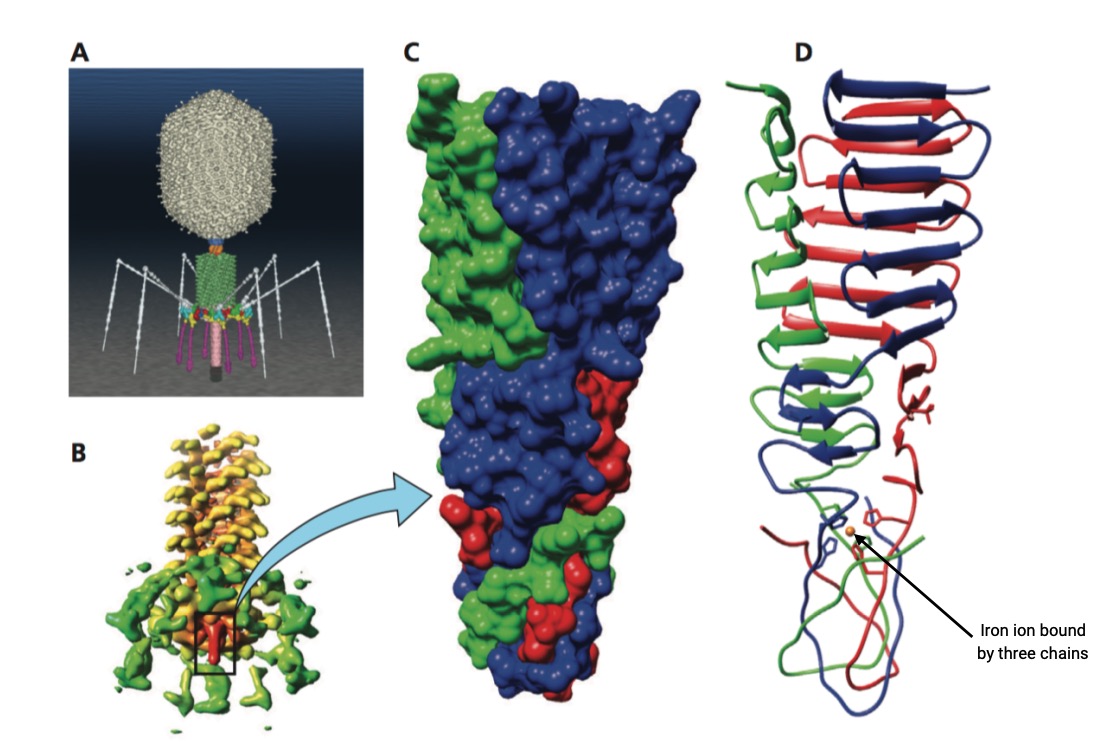
Tags:
Source:
Virology
Herpes Simplex Virus Capsid
The herpes viruses contain a nucleocapsid with an envelope. The capsid has holes in one of the proteins that acts as a portal for the DNA to get into the shell during assembly and out of the shell for infection.
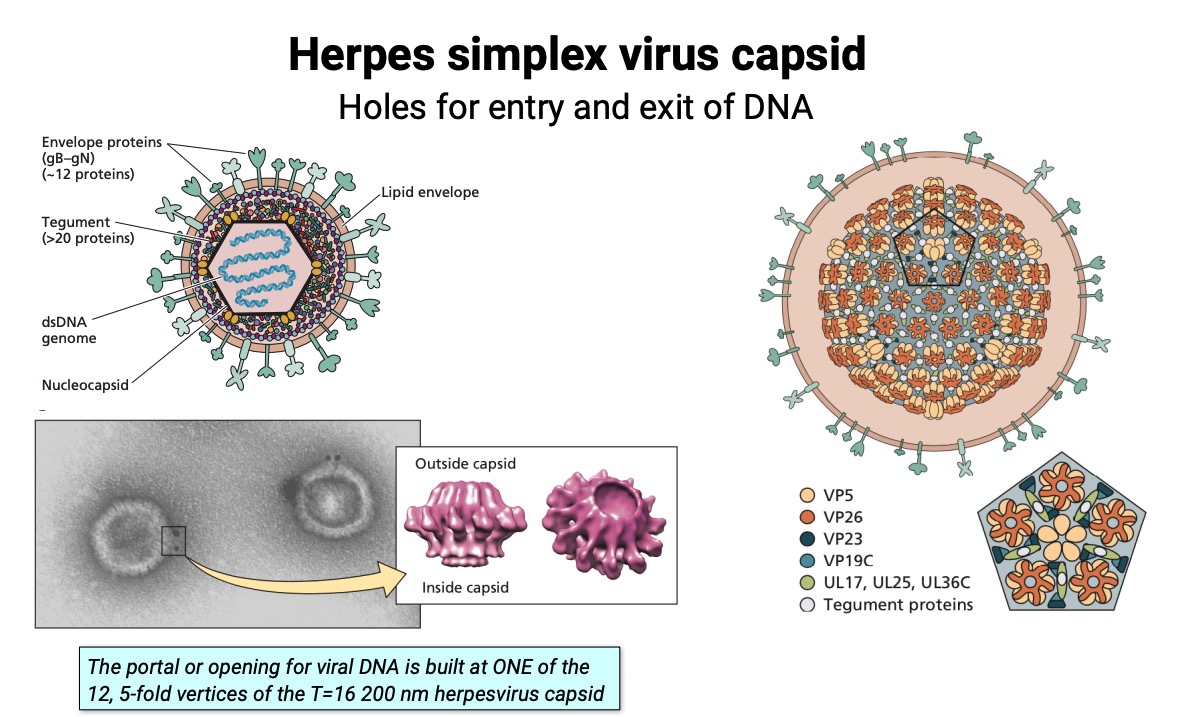
Tags:
Source:
Virology
Membrane Budding
Both helical and icosahedral viruses have membranes around them. The membrane is a lipid bilayer that comes from the host. The process of acquiring the memberane is called budding. The nucleocapsid forms under the membrane and then the whole structure buds out.

Tags:
Source:
Virology
Glycoproteins
Glycoproteins are structural components of viral membranes. They have internal and external parts. The external part is involved in attachment to specific cells to infect.
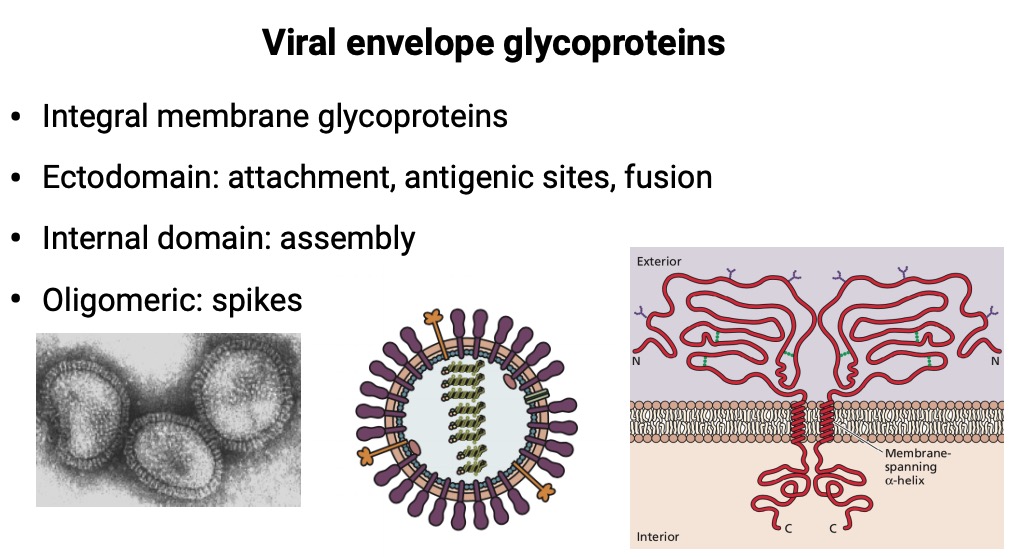
Tags:
Source:
Virology
Glycoproteins Orientation
Glycoproteins can be oriented vertically as well as horizontally on the surface of the membrane.
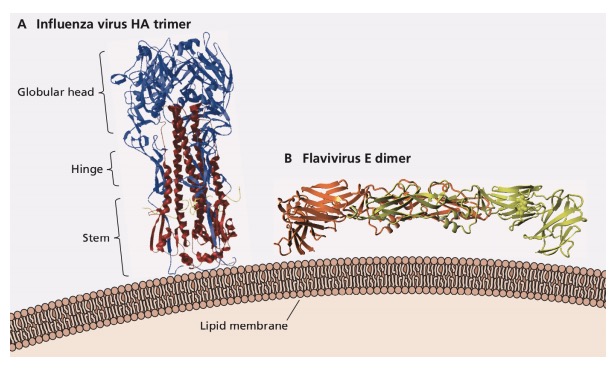
Tags:
Source:
